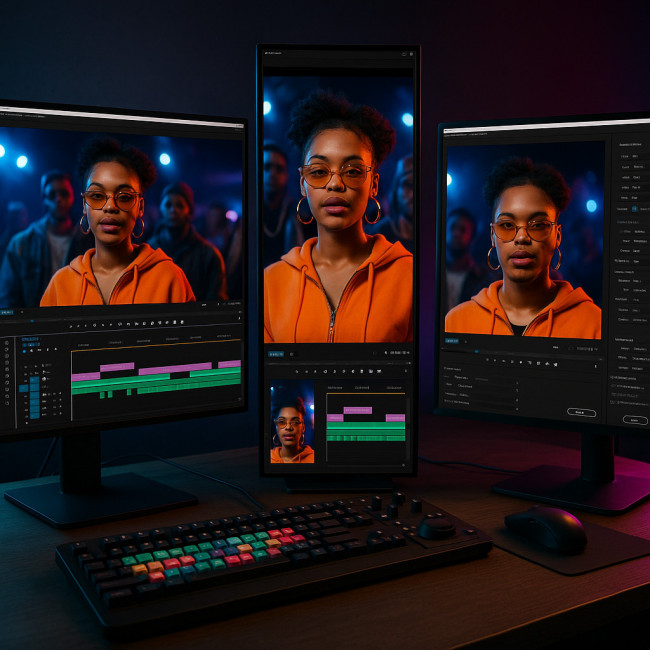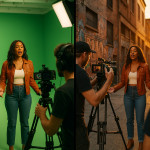Label-friendly deliverables: packaging music-video edits for multi-platform rollout
Major labels expect one shoot to yield a stack of ready-to-publish assets. This guide shows you how to package music-video deliverables that wow A&R teams, satisfy platform specs and accelerate release calendars—without drowning in last-minute re-exports.
Why labels demand multi-platform deliverables today
Streaming growth pushed labels to extract maximum reach from every visual. A single master now spawns vertical teasers, muted autoplay loops and subtitle-heavy lyric cuts. If you present these variants upfront, you:
- Shorten approval cycles—marketing teams queue files instantly.
- Protect creative intent—no random intern crops your frame later.
- Add invoice value—each extra edit carries a clear line item.
Platforms change fast. Keeping a top-rated music-video videographer profile updated with your packaging skills helps labels shortlist you first.
Step-by-step workflow to package label-ready deliverables

From a bird's-eye overview to the granular export settings, the workflow lives and dies in the timeline. Picture three color-coded sequences stacked like dominoes—each inherits the hero grade but preserves its own safe margins, caption track and audio bus routing. As you progress, markers remind you when to re-frame a whip-pan for 9:16 or swap a flash frame that would strobe on certain feeds. By the time you solo each sequence for export, you are essentially pressing “Deliver” five times instead of rebuilding from scratch. This disciplined structure is what keeps Mondays free of emergency calls, and it impresses every label coordinator who opens your folder and finds perfect parity across all ratios.
1. Draft a master edit roadmap
Begin with the hero 16:9 version. Build a roadmap showing how you will derive every other cut. Share it during pre-production alongside your pre-production questionnaire to align expectations early.
2. Versioning specs by platform
Use the cheat-sheet below to lock aspect ratios, duration caps and bitrate before you hit “export.”
| Platform | Primary Ratio | Max Length | Recommended Bitrate (1080p) | Captions |
|---|---|---|---|---|
| YouTube | 16:9 | No limit | 8–12 Mbps | SRT or embedded |
| TikTok | 9:16 | 10 min | 2–3 Mbps | Burn-in |
| Instagram Reels | 9:16 | 90 s | 2–4 Mbps | Burn-in |
| 4:5 | 240 min | 4–6 Mbps | SRT optional | |
| Spotify Canvas | 9:16 | 8 s loop | 1 Mbps | N/A |
3. Prep audio deliverables & rights
Supply lossless stems (vocals, instrumental, crowd FX) and a -14 LUFS streaming master. Store rights paperwork with each file to avoid takedown headaches.
4. Bundle metadata that boosts discovery
Embed ISRC, BPM and key into file headers. Provide a text sheet with featured artist handles and campaign hashtags so social teams never mistype.
Common pitfalls and how to sidestep them
- Late vertical crops. Shoot headroom for 9:16 safety zones or capture a dedicated take.
- Colour shifts between exports. Lock color space to Rec.709, 2.4 gamma and bypass “auto tone mapping.”
- Broken playback on autoplay feeds. Test silent-first storytelling; add text cues in the opening three seconds.
- Metadata mismatches. Automate tagging using watch-folders in your NLE.
Case study: indie director, five platforms, seven days
Director Lina Alvarez delivered a 3:30 trap video for an independent label. Using the workflow above she:
- Locked a 16:9 master on day one.
- Batch-exported vertical, square and 8-second loops within four hours.
- Dropped files into a cloud folder with naming conventions:
Artist_Song_Platform_Ratio_V1.mov. - Secured 1 M organic TikTok views pre-release, boosting YouTube premiere to 300 k in 24 hours.
The label rehired her immediately—proof that footage repurposing elevates both reach and revenue.
Quick tactics that impress A&R reviewers
- Create an interactive video file for press kits—chapters show set designs and wardrobe sponsors.
- Include one captioned version for accessibility; many countries now demand it legally.
- Add a 15-second BPM-synced teaser timed for paid ads.
- Watermark rough cuts subtly to secure approvals without leaks.
Mini-checklist before you hit “Deliver”
- All filenames include version, ratio, date.
- Subtitles proofread by a native speaker.
- Audio peaks under ‑1 dBTP.
- Master and ProRes mezzanine stored on LTO or cloud cold storage.
QUIZ: Are your deliverables truly label-friendly?
FAQ
- Do I need separate exports for Instagram Stories and Reels?
- Not anymore—both accept 9:16, but Stories allow up to 15 s segments while Reels go to 90 s. Export once, trim inside the app.
- Should I deliver 4K files even if the platform streams 1080p?
- Yes. Labels store a high-resolution future-proof master for remasters and remixes. Provide a 4K ProRes plus a 1080p H.264.
- How do I protect my edit before release?
- Watermark review links, disable downloads and embed visible timecodes. Most labels use frame-accurate review platforms to track access.
- What's the best way to price multiple deliverables?
- Quote a base fee for the hero video, then list each additional ratio or teaser as an option. Refer to label-scouting metrics to justify ROI.
Ready to level up your deliverable game?
Apply the workflow above to your next shoot and showcase the results in your portfolio. Labels notice the editors who think ahead—so make “multi-platform ready” your new default.
Need help streamlining your post-production pipeline? Reach out through your Artfolio profile and let's make every frame count.











